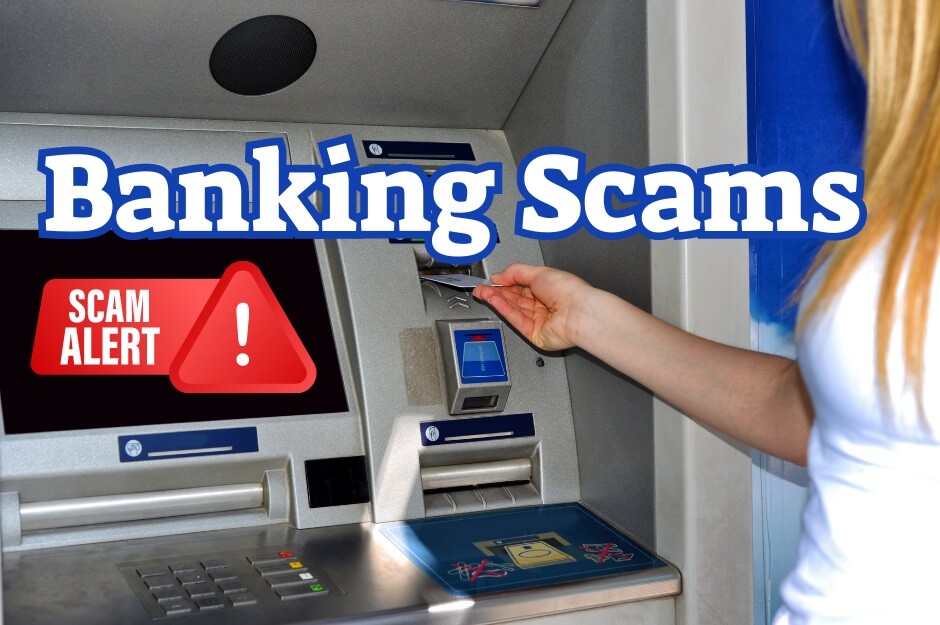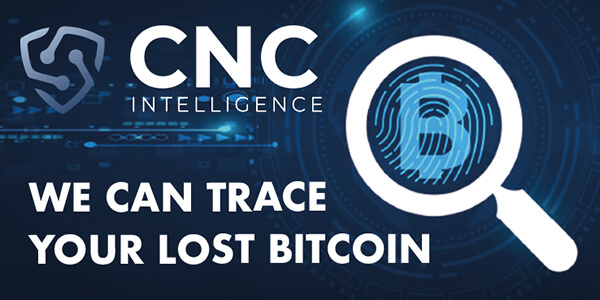Banking Scams refer to fraudulent activities and deceptive practices aimed at exploiting individuals’ financial information or manipulating their banking transactions for illicit gain.

On June 12, 2023, a Utah, USA person who reported losing $4500 filed the following complaint with the BBB (Better Business Bureau) regarding a cryptocurrency scam from California, USA:
I was notified that there was a problem with my bank, and I was asked to help them solve the issue and identify the person involved. They instructed me to go to the bank and withdraw funds, then take them to a Bitcoin machine. They claimed that the money would be encrypted, enabling the scammers to locate the dishonest person within the bank. They also assured me that they would use bank funds to facilitate this process. Surprisingly, they had already accessed my account and transferred the money from my savings to checking.
When I approached the bank for the $4,500, they provided it to me. Since I was aware that I didn’t have that amount in my checking account, I believed their explanation. Consequently, I withdrew the money and proceeded to the specified Bitcoin machine. However, I soon realized that something was amiss, prompting me to contact Bitcoin immediately. Fortunately, they were able to track the deposit and prevent the scammers from transferring the funds. Nonetheless, Bitcoin informed me that it would take approximately 6 to 8 weeks to recover the money, while retaining a 10% fee. I couldn’t help but wonder if Bitcoin was somehow involved in the scam. Unfortunately, I have yet to receive any reimbursement. The incident took place on April 3rd, 2023.
This experience describes a Banking Scam. In this particular case, it appears to involve elements of social engineering and cryptocurrency fraud.
The scam typically begins with the scammers contacting the victim, posing as representatives of the victim’s bank or financial institution. They claim that there is a problem with the victim’s account or security and persuade the victim to assist in resolving the issue. The scammers then provide instructions that involve the victim withdrawing money from their account and either transferring it to the scammers or using it to purchase cryptocurrency like Bitcoin.
In this specific scam, the scammers falsely claim that the money will be encrypted to track the person involved in the bank who is allegedly dishonest. They exploit the victim’s trust in the bank and their lack of knowledge about how such processes work. The mention of “Bit Coin” (Bitcoin) and the involvement of a Bitcoin machine indicates that the scammers were trying to use cryptocurrency as a means to receive the stolen funds.
Common Types of Banking Scams
Phishing and Email Scams
Phishing typically involves sending deceptive emails that mimic trustworthy sources, such as banks or financial institutions. The emails often include logos, design elements, and language that closely resemble those used by legitimate organizations. Phishers aim to trick recipients into believing the email is authentic, leading them to share their personal information, such as account numbers, passwords, or social security numbers.
Phishing emails commonly employ various techniques to manipulate recipients, such as urgency or fear tactics. For instance, they might claim that there is an issue with the recipient’s account, requiring immediate action to avoid consequences or loss of access. They may also use social engineering tactics by personalizing the email with the recipient’s name or providing seemingly legitimate reasons for requesting information.
Email scams targeting bank customers can take different forms. Here are a few common examples:
- Account Verification Scam: In this type of scam, the email claims that the recipient’s account needs verification due to suspicious activity or system upgrades. The email includes a link that directs the recipient to a fake website, where they are prompted to enter their login credentials, unknowingly providing the information to scammers.
- Fraudulent Transaction Alert: Scammers send emails alerting recipients about unauthorized transactions on their bank accounts. The email instructs the recipient to click on a provided link or attachment to dispute the transaction. However, the link or attachment may contain malware or lead to a fake website designed to collect personal information.
- Lottery or Inheritance Scam: These scams promise recipients a significant sum of money from a lottery win or an unexpected inheritance. The email requests the recipient’s banking details to facilitate the transfer. Providing this information exposes the victim to identity theft and financial fraud.
Phone Scams
Phone scams pose a significant threat in the realm of banking scams, with scammers employing various techniques to deceive unsuspecting victims. These scams involve fraudsters making phone calls, pretending to be legitimate representatives from banks or financial institutions.
Get in touch with our affiliated Cryptocurrency Forensic Specialists at CNC Intelligence for free by filling out the form below.
Phone scams can manifest in different ways, but they often share common characteristics:
- Impersonation Scams: Scammers pose as bank employees, claiming to be from the fraud department, customer service, or technical support. They may use sophisticated tactics to convince victims that they are legitimate representatives, utilizing tactics such as spoofing caller IDs to display the bank’s official number.
- Account Compromise Scams: Scammers contact victims, informing them of suspicious activities or unauthorized access to their bank accounts. They create a sense of urgency, urging victims to take immediate action to protect their funds. The scammers then guide victims through steps that ultimately result in the victims unknowingly providing access to their accounts or transferring funds to the scammers.
- Loan or Investment Scams: In these scams, fraudsters contact individuals, offering attractive loan terms or investment opportunities. They entice victims with promises of quick approvals, low-interest rates, or high returns. However, to proceed, scammers often require upfront fees or personal information, which they use for fraudulent purposes.
Techniques Used by Scammers to Deceive Victims
Scammers employ various techniques to deceive victims and gain their trust:
- Social Engineering: Scammers use persuasive tactics to manipulate victims emotionally. They may create a sense of fear, urgency, or excitement to impair victims’ judgment and prevent them from questioning the authenticity of the call.
- Caller ID Spoofing: Scammers can manipulate caller ID information to display a legitimate bank’s phone number or a recognized organization, tricking victims into believing the call is genuine.
- Building Trust: Scammers aim to build trust with victims by using personal information they may have obtained through data breaches or online sources. By displaying knowledge about the victim’s banking activities, they appear more credible.
Fake Websites and Online Banking Scams
Fake websites and online banking scams are prevalent in banking fraud. Scammers create deceptive websites that closely mimic the appearance and functionality of legitimate banks or financial institutions.
Scammers invest considerable effort into designing fake websites that closely resemble the official websites of banks. These websites often replicate the logos, colors, and layout of legitimate banking platforms, creating a convincing illusion of authenticity.
Scammers may use domain names that are similar to the legitimate bank’s domain but with slight variations, such as misspellings or different domain extensions. This can easily mislead users who may not notice the subtle differences.
Fake websites strive to imitate legitimate banking platforms’ user interface and functionality. They often include login pages, account dashboards, and transaction screens that appear authentic, aiming to convince users to input their credentials or perform banking actions.
ATM Skimming and Card Fraud
ATM skimming and card fraud are prevalent forms of banking scams that target individuals using automated teller machines (ATMs) and their payment cards. Scammers employ various techniques to steal card information and carry out unauthorized transactions.
Skimmers install devices on ATMs to capture card data and personal identification numbers (PINs) discreetly. These devices include card skimmers placed over the legitimate card slots, which read the card details, and hidden cameras or keypad overlays to capture PINs. Scammers then use the stolen data to create counterfeit cards or make fraudulent transactions.
With stolen card data, scammers can create cloned cards using card encoding equipment. These cloned cards can be used to withdraw cash or make purchases, often without the cardholder’s knowledge or consent. The magnetic stripe or chip on the cloned card contains the victim’s stolen information, making it indistinguishable from a legitimate card.
Tips for Protecting Against Card-Related Scams
- Be Vigilant at ATMs: Inspect the ATM before using it. Look for any signs of tampering, such as loose or mismatched parts, unusual devices, or hidden cameras. If anything seems suspicious, avoid using the machine and report it to the respective bank or authorities.
- Protect Your PIN: Shield your PIN entry with your hand or other objects to prevent hidden cameras or prying eyes from capturing it. Avoid using obvious or easily guessable PINs, and never share your PIN with anyone.
- Use Secure ATMs: Whenever possible, use ATMs located in well-lit, highly trafficked areas. ATMs within bank branches or other secure locations are generally safer than standalone machines.
- Monitor Your Accounts: Regularly review your bank statements and transaction history for any unauthorized or suspicious activity. If you notice any discrepancies, report them to your bank immediately.
- Enable Transaction Alerts: Consider enabling transaction alerts on your mobile phone or email. These notifications will alert you to any activity on your account, allowing you to identify potential fraud quickly.
- Contactless Payments: Utilize contactless payment methods, such as mobile wallets or chip-enabled cards, whenever possible. These technologies provide an added layer of security by encrypting transaction data.
Recognizing and Avoiding Banking Scams
When engaging with banking-related matters, be on the lookout for the following warning signs that may indicate a potential scam:
- Unsolicited Contact: Beware of unsolicited phone calls, emails, or text messages claiming to be from your bank or financial institution. Legitimate organizations typically don’t initiate contact out of the blue to request sensitive information or ask for financial transactions.
- Urgency and Pressure: Scammers often create a sense of urgency, using phrases like “immediate action required” or “limited time offer.” They may push you to make hasty decisions without providing sufficient time for careful consideration.
- Requests for Personal Information: Be cautious if someone asks you to disclose personal or sensitive information, such as your Social Security number, account credentials, or passwords. Legitimate banks would not ask for such details through unsolicited means.
- Poor Grammar and Spelling: Many scam messages contain grammar mistakes, misspellings, or awkward sentence structures. These errors may indicate the message’s lack of authenticity.
Suspicious Requests or Demands to Watch Out For
Stay alert for suspicious requests or demands that may indicate a banking scam:
- Request for Immediate Payment: Scammers may pressure you to make immediate payments or wire transfers without providing valid reasons or proper documentation. Always verify the legitimacy of such requests independently.
- Unusual Payment Methods: Be cautious if asked to make payments using unconventional methods such as gift cards, virtual currencies, or wire transfers to unfamiliar recipients. Legitimate institutions typically provide standard payment channels and clear instructions.
- Unexpected Changes to Account Information: If you receive notifications about unexpected changes to your account information, such as email addresses, phone numbers, or mailing addresses, without initiating those changes yourself, it may indicate an attempted account takeover or identity theft.
Protective Measures
To protect yourself from banking scams, consider implementing the following measures:
- Use Strong and Unique Passwords: Create strong, complex passwords for your online banking accounts, and avoid using the same password across multiple platforms. Consider using password managers to securely store and generate passwords.
- Enable Multi-Factor Authentication (MFA): Activate MFA for your online banking accounts whenever available. This adds an extra layer of security by requiring additional verification steps, such as a unique code sent to your mobile device, when accessing your account.
- Keep Software Updated: Regularly update your computer, mobile devices, and banking apps with the latest security patches. Outdated software may have vulnerabilities that scammers can exploit.
- Use Secure Networks: Avoid accessing your online banking accounts on public Wi-Fi networks or unsecured connections. Instead, use trusted and secure networks to protect your sensitive information.
Safeguarding Personal and Financial Information
Take the following precautions to safeguard your personal and financial information:
- Be Cautious with Personal Information: Be selective about sharing personal information and financial details. Only provide such information to trusted sources or through secure channels.
- Secure Your Devices: Use strong passwords or biometric authentication to secure your devices. Regularly update your antivirus and anti-malware software to protect against potential threats.
- Be Mindful of Social Media: Limit the amount of personal information you share on social media platforms. Scammers can exploit this information to gather data for targeted attacks or identity theft.
Verifying Authenticity
Verify the authenticity of communications and sources to ensure you are not falling victim to a banking scam:
- Contact Your Bank Directly: If you receive any communication that raises suspicion, contact your bank directly using their official contact information. Do not use the contact details provided in the suspicious message itself.
- Cross-Check Information: Verify any requests, offers, or notifications independently by comparing them with official information from your bank’s website or other reliable sources.
- Be Skeptical of Unsolicited Communications: Treat unsolicited communications with skepticism, especially if they request personal information, payment, or sensitive data. Legitimate banks would typically not initiate such requests out of the blue.
Reporting Scams and Seeking Assistance
If you have fallen victim to a banking scam, follow these steps to report it to law enforcement:
- Document the Details: Gather all relevant information about the scam, including emails, text messages, or any other communication, as well as transaction records, dates, and amounts involved.
- Contact Local Law Enforcement: Report the scam to your local police department or the nearest law enforcement agency. Provide them with a comprehensive account of the scam and all the evidence you have collected.
- File a Complaint with Law Enforcement Agencies: In many countries, there are dedicated agencies or units specializing in financial fraud. Research and reach out to these organizations, such as the Federal Trade Commission (FTC) in the United States or Action Fraud in the United Kingdom, to file an official complaint.
Government Agencies and Resources for Reporting Scams
Various government agencies and resources are available for reporting scams and seeking assistance:
- Financial Regulatory Agencies: Contact the financial regulatory agency in your country, such as the Securities and Exchange Commission (SEC) or the Financial Conduct Authority (FCA). They oversee the financial industry and can guide you on reporting scams related to banking or investment activities.
- Consumer Protection Agencies: Government organizations focused on consumer protection, like the Consumer Financial Protection Bureau (CFPB) in the United States, can provide guidance on reporting scams and offer resources to protect yourself.
Seeking Help from Banks
Contacting the Bank to Report Fraudulent Activity
If you believe you have been targeted by a banking scam, it’s crucial to contact your bank immediately. Take the following steps:
- Call Your Bank: Use the official contact information provided by your bank to report the fraudulent activity. Explain the situation in detail, providing any evidence or documentation you have.
- Freeze or Close Accounts: If necessary, ask the bank to freeze or close any affected accounts to prevent further unauthorized transactions. They can guide you through the process and assist with securing your funds.
Cooperation with Banks to Resolve Scam-Related Issues
Work closely with your bank to resolve any scam-related issues:
- Provide Information: Cooperate fully with your bank, providing any additional information they may require to investigate the scam effectively. This may include providing transaction details, account statements, or any other relevant documentation.
- Follow Bank’s Guidance: Follow the instructions and guidance provided by your bank to rectify the situation. They may have specific protocols or procedures in place to address fraud incidents.
Conclusion
Banking scams pose a significant threat in today’s digital world, targeting individuals and their hard-earned money. By understanding the warning signs and red flags associated with banking scams, you can better protect yourself and your family.
In the ever-evolving landscape of banking scams, staying informed and vigilant is key. Continuously educating oneself about the latest scam techniques, sharing knowledge with others, and remaining proactive in implementing security measures are all integral to protecting against these scams.
Remember, your bank will never ask for sensitive information or demand immediate payments through unsolicited means. Trust your instincts, verify communications independently, and rely on official contact information when in doubt.
By collectively raising awareness, reporting scams, and taking preventive measures, we can create a safer banking environment for everyone. Together, let’s stay vigilant, protect our finances, and ensure that scammers find it increasingly difficult to succeed in their fraudulent activities.
Stay informed, stay cautious, and stay one step ahead of banking scams.
If you have fallen victim to online scams, please comment below. If you have suffered a substantial financial loss, do not despair. We are here to assist you in recovering your funds!
When you comment, your name, comment, and the timestamp will be public. We also store this data, which may be used for research or content creation in accordance with our Privacy Policy. By commenting, you consent to these terms.

